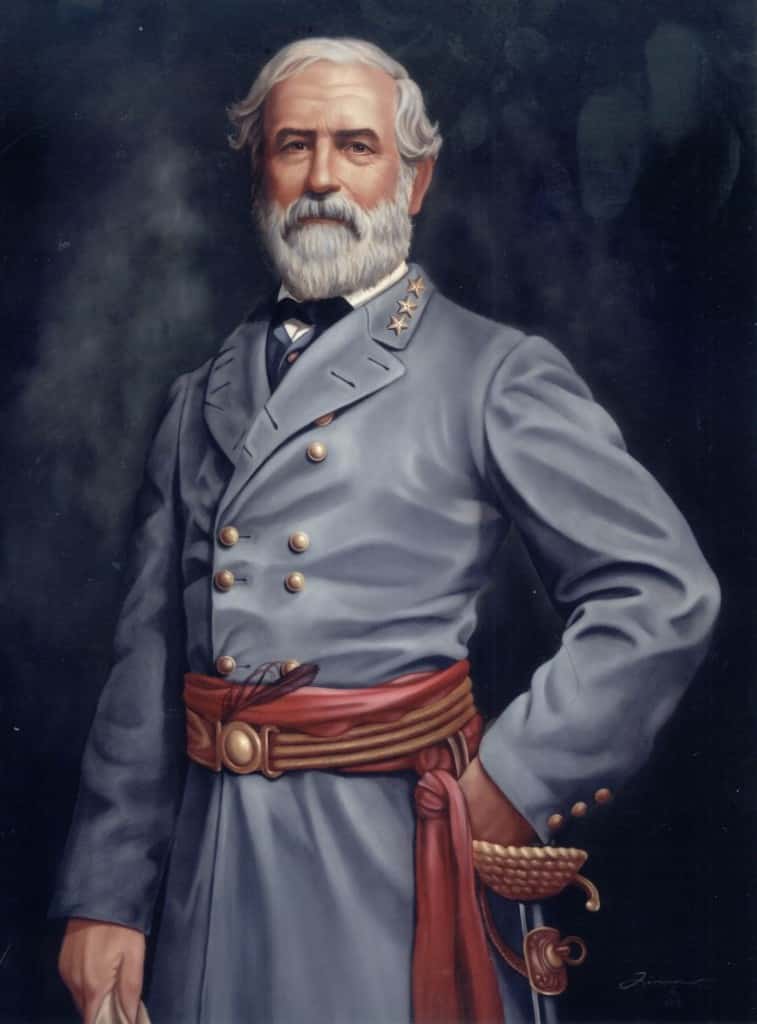Robert Edward Lee was born of two distinguished Virginia families. He was a devoted son, an outstanding Westpoint cadet, and an United States army officer for thirty two years. He graduated second in his class.
Lee started his impressive Military career as a Lieutenant in the Corps of Engineers. His first assignment was to work on the construction of  Fort Pulaski in 1830 near Savannah, Georgia. Then in 1831 he was transferred to Fort Monroe, Virginia where he worked on harbor defenses. In 1834 he moved to Washington, D.C. as an assistant to the chief of engineers. In 1835 he was assigned to resolve the Ohio-Michigan boarder conflict.
Fort Pulaski in 1830 near Savannah, Georgia. Then in 1831 he was transferred to Fort Monroe, Virginia where he worked on harbor defenses. In 1834 he moved to Washington, D.C. as an assistant to the chief of engineers. In 1835 he was assigned to resolve the Ohio-Michigan boarder conflict.
In 1837 he went to Saint Louis to work on stabilizing the Mississippi river channel. He was promoted to captain in 1838. Being successful in Saint Louis he was assigned to Fort Hamilton in 1841 to work on the New York Harbor fortifications. When war broke out with Mexico in 1840 Lee was sent to Mexico for two years as an engineering officer. There he was praised for his gallantry and good conduct. In the war with Mexico he was wounded in the Storming of Chapultepec in 1847. The Mexican war was supposed to be the help that Lee needed in the experience of commanding troops.
After the Mexican war Lee was assigned to Baltimore in 1848, he was to supervise the construction of Fort Carrol for nearly four years. In 1852 the United States military academy at West Point became Lees home when he was appointed superintendent. During his three year stint he raised academic standards, lengthened the program from four to five years, and improved facilities. In 1859 in Arlington, Texas Lee was given command of Federal forces which were there to make sure Mexicans did not invade Texas. Then Lee was sent to capture the abolitionist, John Brown at Harpers Ferry.
Then when war seemed impossible to avoid, President Abraham Lincoln summoned Lee and asked him to lead the Union army, but Lee declined. On April 23 he became commander and chief of the military forces in Virginia, just three days after he resigned from the U.S. Army.
In February 1865 Lee was made commander and chief of all confederate forces. His great battles of the Civil wars include Antietam, Chancellorsville, Fredericksburg, and Gettysburg. He won many, many battles in the Civil war. Finally on April 9, 1865 General Robert E. Lee surrendered to General Ulysses S. Grant at the Appomattox courthouse. He had a knack for anticipating the actions of his opponents and for comprehending their weaknesses. Many of Lee’s tactics were not fully understood until the twentieth century.
After the war Lee accepted the Presidency of Washington College, now Washington and Lee University in the fall of 1865. He died there on October 12, 1870. Lee is arguably the greatest General in American Warfare history. He has been called a hero by many Americans. He was a great soldier and commander on the battlefield. The Robert Lee memorial is now a national memorial.
